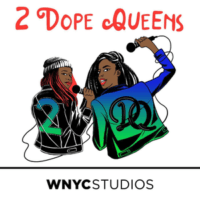 The spheres of commercial radio and public radio are, for the most part, completely isolated from one another. Broadcasters don’t pay much attention to what their counterparts on the other side are doing. But as we move towards a world where on-demand audio is enabled by podcasts and voice commands, commercial radio broadcasters can learn a lot from public radio broadcasters. Sure, Bubba the Love Sponge is never going to need to run down the day’s stock market numbers like Kai Ryssdal; but there’s a lot of insight that can be gained by watching what public radio is doing.
The spheres of commercial radio and public radio are, for the most part, completely isolated from one another. Broadcasters don’t pay much attention to what their counterparts on the other side are doing. But as we move towards a world where on-demand audio is enabled by podcasts and voice commands, commercial radio broadcasters can learn a lot from public radio broadcasters. Sure, Bubba the Love Sponge is never going to need to run down the day’s stock market numbers like Kai Ryssdal; but there’s a lot of insight that can be gained by watching what public radio is doing.
For starters, the players in the public radio space are, by and large, much farther ahead when it comes to podcasting. Part of that stems from the fact that it’s simply easier to take a talk radio show and make it available on demand when there’s no music that needs to be removed. An episode of Fresh Air can be posted online without any major changes, while most commercial radio morning shows cannot. But public radio companies like NPR, PRX, and WNYC have also made significant investments in the space. Every commercial radio programmer and on-air talent could benefit by looking at what they’ve done.
If you’re working at a commercial radio station, what’s a good way to learn more about public radio? Here are three places to start…
1. Listen.
If your primary exposure to public radio comes from their morning and afternoon drive news shows, it’s worth spending some with their other programs, you may not be aware of its breadth. Public radio’s offerings are incredibly diverse. Here’s a list of different shows to sample that I’ve selected these because they show a range of different styles:
- This American Life: Led by Ira Glass, This American Life set the gold standard for storytelling journalism. Just as Howard Stern inspired a generation of shock jocks and Rush Limbaugh inspired a wave of conservative pundits, Glass has spawned countless disciples, many of whom have gone on into podcasting. After you’ve checked out This American Life, listen to the massive podcasting hit Serial, which is produced by the same team, and you’ll hear the stylistic influences.
- Death, Sex and Money: Lest you assume that all public radio programs are stuffy, Ana Sale hosts this podcast featuring one-on-one conversations with celebrities and other guests that tackle difficult topics that aren’t normally discussed in polite discussion. It’s NSFW but it will convince you that public radio broadcasters can be every bit as edgy as their commercial counterparts.
- Wait Wait…Don’t Tell Me!: Game shows aren’t just for television. This format offers a lighter take on the week’s news and can serve as an inspiration for commercial broadcasters who are more focused on entertainment than journalism. The show is also recorded in front of a live studio audience which adds to the fun and the complexity of the production.
- The Moth: This show is an excellent example of how radio broadcasters can crowdsource their material. It compiles recordings of storytellers from around the country. (It’s also worth going to a live Moth storytelling event. If you dare, get up on stage and share a story.)
 2 Dope Queens: WNYC in New York has invested considerable time and energy into podcasting, often using the medium to showcase people from backgrounds that are otherwise underrepresented in radio. This show, hosted by African-American comedians Jessica Williams (former The Daily Show correspondent) and Phoebe Robinson, is a prime example. It’s been such a big hit that it’s now television show on HBO.
2 Dope Queens: WNYC in New York has invested considerable time and energy into podcasting, often using the medium to showcase people from backgrounds that are otherwise underrepresented in radio. This show, hosted by African-American comedians Jessica Williams (former The Daily Show correspondent) and Phoebe Robinson, is a prime example. It’s been such a big hit that it’s now television show on HBO.- Up First: Voice-activated smart speakers like the Amazon Echo and Google Home are making it easier for people to consume audio at home. A number of media outlets, including The New York Times and ESPN, are taking advantage of this trend by offering short, daily podcasts that people can consume first thing in the morning. NPR’s Up First is a good example of a daily podcast that aims to build daily listening habits.
2. Learn.
 The audio content that public radio creates often takes a very different form than what we create in commercial radio. I can hit the post on a Linkin Park song without breaking a sweat, but I’ve never used a shotgun mic to record B-roll audio in the field. How do public radio broadcasters do it?
The audio content that public radio creates often takes a very different form than what we create in commercial radio. I can hit the post on a Linkin Park song without breaking a sweat, but I’ve never used a shotgun mic to record B-roll audio in the field. How do public radio broadcasters do it?
Fortunately, NPR actually makes many of the secrets of their trade available online. Spend some time on NPR’s training website and you’ll refine your skills and even pick up some new ones.
3. Read.
 If you want to find out even more about how public radio broadcasters practice their craft, there are two books worth picking up:
If you want to find out even more about how public radio broadcasters practice their craft, there are two books worth picking up:
- Sound Reporting: The NPR Guide to Audio Journalism and Production: Jonathan Kern, who spent years training NPR staffers, explains exactly how they do what they do in this classic tome.
- Out on the Wire: The Storytelling Secrets of the New Masters of Radio: Jessica Abel, a cartoonist by trade, loved narrative radio so much that she decided to write a behind-the-scenes book about it in graphic form. It’s a unique way to get a behind-the-scenes look at the creation of shows like Planet Money, Radiolab, and Invisibilia.
As commercial radio broadcasters, we rarely take the time to look outside or own market or format. But if you really want to excel at your craft, it’s helpful to look for inspiration outside of your usual surroundings from time to time.
More Digital Tips
- Twelve Ways to Promote the Hashtag for Your Radio Station’s Next Event
- On Your Radio Station Website, Use Language That Puts Listeners First
- In Defense of Prize Pigs
- Spotify Now Allows Anybody to Create a Radio Show with Music
- The Most Important Question You Can Ask People Who Come to Your Website
- A Simple Digital Treat to Thank Your Radio Listeners This Thanksgiving - November 13, 2023
- Interview Questions When Hiring Your Radio Station’s Next Digital Marketing Manager - November 6, 2023
- A Radio Conversation with ChatGPT: Part 2 – Promotions - October 30, 2023





Leave a Reply